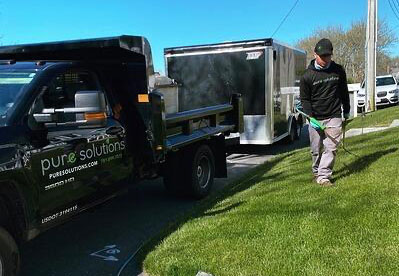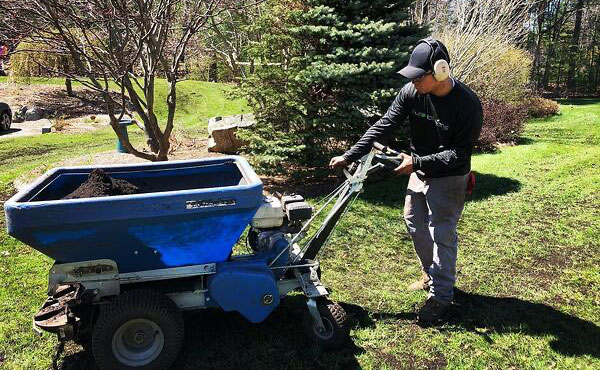The patio furniture has been put away, Halloween is around the corner and it's time to start putting up the driveway stakes in advance of plowing season. As the colder months move in spend less time concerned with green lawns, and more time consumed with fall cleanups. After a summer spent mowing, watering, composting, fertilizing, and aerating your lawn is ready to be put to bed. To give your organic lawn the best environment possible to thrive next spring, here are a few key steps to ensure you are leaving your lawn as healthy this winter.
1. Weeding
Weeds are like most plants, they go dormant in the winter and wait to germinate and spread in the spring. As Bob Vila states “perennial weeds compete for nutrients with the rest of your lawn, it's important to remove them before the long winter.” This will also give your grass the chance to crowd out weed growth next spring. The most successful strategy is to pull established weeds by hand making sure to remove the roots. Then apply a pre-emergent organic herbicide (like those used by Pure Solutions) in the spring to prevent weeds from re-establishing.
2. Mowing
In general, during the growing season, we suggest keeping the grass longer. As we move from fall to winter it's a good idea to perform your final cut around 2 inches for New England lawns. The University of Vermont states “The last mowing of the season can be on the short side, about 2 inches high. This will help prevent the grass packing as much under snow, making it susceptible to leaf diseases such as snow mold.” Also in the fall, you only need to cut your lawn about every 2 weeks until all the leaves have fallen. We recommend mulching the leaves as you mow and allowing some of the leaf clippings to sit on the lawn to help provide additional nutrients into the grass.
3. Aerating
Aerating a lawn is a mechanical process that pulls out a ¾ inch core of soil throughout your property. Aerating is a crucial step to help nutrients get into the root layer of the grass on your all-natural lawn. At Pure Solutions, we provide aeration service through October, as we know the key to a healthy lawn in the spring is providing organic lawns rich nutrients right up until the snow falls.
*When you aerate this is also the optimal time to overseed your lawn as well (more below).
4. Fertilizing
Fertilizer is a crucial step to winterize your lawn. First, you must know what types of grass you have on your lawn to make sure you are using the correct fertilizer. Here in New England, cool-season grasses see the most growth in fall. Winterizer fertilizers are the best choice for these cool-season grasses and you should apply them in October or November to see the best results.
In the fall, as we get less daylight and cooler temperatures, turf grass will begin to slow its growth and shift nutrient reserves from the blades to the roots, where the grass remains active - under the soil. This is what makes fall an effective and ideal time to fertilize.

The Massachusetts Dept. of Agriculture has these tips as well:
“Remember to always read and follow the label directions. Try not to use fertilizer on slopes or near sensitive resources. If you must use fertilizer near a water body, make sure a buffer strip of grass that has not been fertilized lies between the area of application and the water body. This will help prevent unwanted nutrients from running into the water. Apply as evenly as possible.”
5. Overseeding
Overseeding your lawn in fall gives your organic turf the best chance for new growth in the spring while also crowding out new weed growth. Identify patchy or bare spots in your organic yard and make sure they are aerated or raked thoroughly. You’ll want to fill the spreader with seed, and follow the recommendations on the bag for your setting. Be consistent in your passes and keep the spreader moving when the hopper is open. At Pure Solutions, we utilize a power overseeder which slices the turf while overseeding for optimal success.
6. Topdressing with Compost
Topdressing involves spreading a thin layer of soil (compost) over your existing organic lawn. Typically, applications range from ¼ inch to ½ inch of compost coverage throughout your lawn. Applying organic compost to your organic turf in the fall drastically improves soil biology by adding nutrient rich organic matter and beneficial microorganisms that are found in compost.
*We use only the highest grade leaf compost in our all-natural lawn care program, which is certified organic.
Just because the leaves are off the trees, does not mean your lawn is in hibernation. By completing the steps above you give your lawn the best chance to come back to life lush, green and thriving next spring. If you have any questions about winterizing your lawn or want to learn more about organic lawn care please contact us today!



